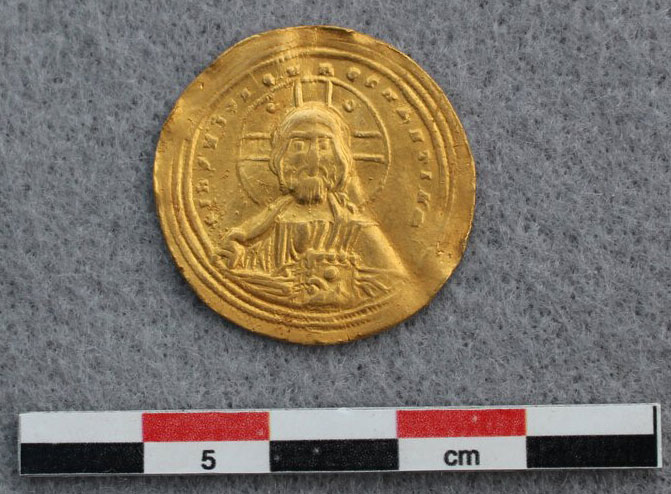 INNLANDET COUNTY, NORWAY—An ancient gold coin has been discovered in the mountains of south-central Norway by a metal detectorist, according to a CBS News report. Known as a histamenon nomisma, the coin was issued by the Byzantine Empire, and was likely minted in Constantinople. One side of the coin features an illustration of Jesus Christ holding a Bible, and a Latin inscription reading “Jesus Christ, King of those who reign,” while the reverse shows the Byzantine emperors Basil II and Constantine VIII, and a Greek inscription stating “Basil and Constantine, emperors of the Romans.” The brothers were co-rulers of the empire near the end of the ninth century. Researchers from the Innlandet County Municipality therefore suggest that the coin was minted between A.D. 977 and 1025. It then could have been carried to Norway by King Harald Hardråde, who ruled Norway from A.D. 1046 to 1066. The king may have acquired the coin when he served as a guard for the Byzantine Empire in Constantinople, or it may have traveled to Norway through the salt trade, the researchers proposed. To read about gold coins and jewelry uncovered at the foot of the Temple Mount in Jerusalem, go to "Byzantine Riches."
INNLANDET COUNTY, NORWAY—An ancient gold coin has been discovered in the mountains of south-central Norway by a metal detectorist, according to a CBS News report. Known as a histamenon nomisma, the coin was issued by the Byzantine Empire, and was likely minted in Constantinople. One side of the coin features an illustration of Jesus Christ holding a Bible, and a Latin inscription reading “Jesus Christ, King of those who reign,” while the reverse shows the Byzantine emperors Basil II and Constantine VIII, and a Greek inscription stating “Basil and Constantine, emperors of the Romans.” The brothers were co-rulers of the empire near the end of the ninth century. Researchers from the Innlandet County Municipality therefore suggest that the coin was minted between A.D. 977 and 1025. It then could have been carried to Norway by King Harald Hardråde, who ruled Norway from A.D. 1046 to 1066. The king may have acquired the coin when he served as a guard for the Byzantine Empire in Constantinople, or it may have traveled to Norway through the salt trade, the researchers proposed. To read about gold coins and jewelry uncovered at the foot of the Temple Mount in Jerusalem, go to "Byzantine Riches."
Byzantine Gold Coin Found in Norway
